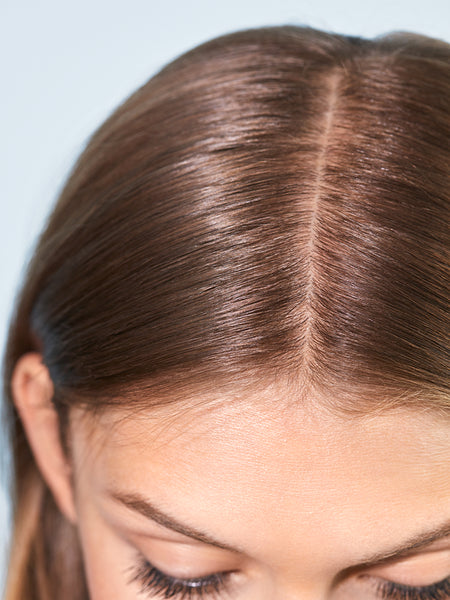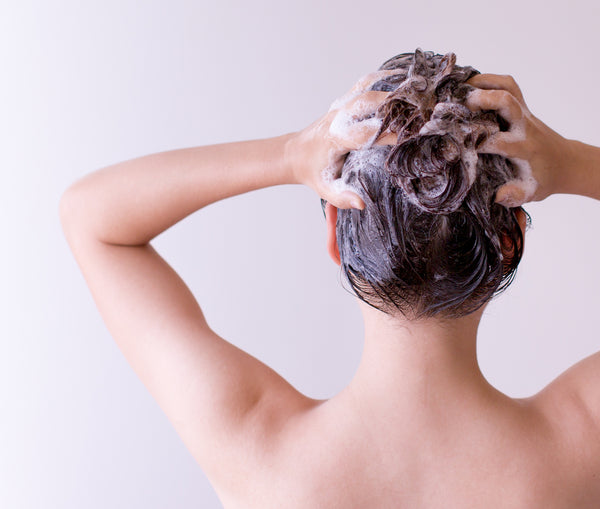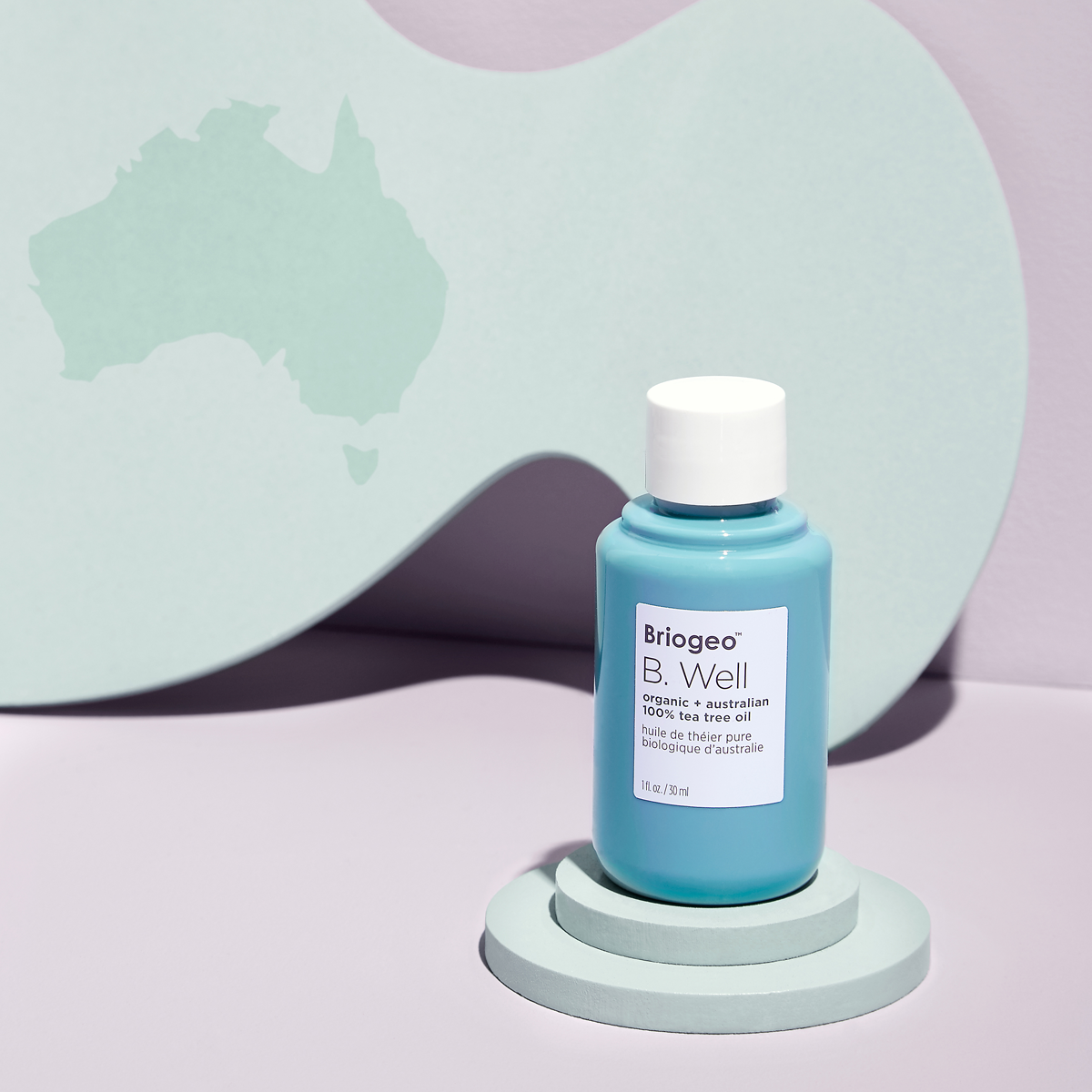If you only grab for your bottle of tea tree oil when you have a minor cut or abrasion, then it’s time to rethink this multi-use beauty essential product ASAP. Tea tree oil can be used to address a whole host of issues. And yes, it's effective for treating minor cuts and abrasions — but did you know it can also work wonders for your skin, scalp and hair, too? Well, read on and prepare to be amazed.
When It Comes to Tea Tree Oil, Quality is Queen

Tea tree oil comes from the Australian-native melaleuca alternifolia plant from which the illustrious Captain James Cook brewed a tea back in the 1770s. Cook dubbed this shrub-like tree the “tea tree,” which, as you can probably guess, is how the plant’s oil came to be known as tea tree oil. As it turns out, this antimicrobial property was already being used by the Australian Aboriginal indigenous population to address all kinds of issues — a fact that Cook soon discovered. Tea tree oil has had a long and storied past, which has led to many extensive studies of its natural antifungal, antiseptic, antibacterial and anti inflammatory properties.
You probably already know that you can find tea tree oil in most health food stores, but many of these inexpensive products are extracted from traditionally grown (non-organic) tea tree plantations where the use of pesticides and other chemicals is widespread. These store-bought tea tree oils may even be sourced from genetically modified species of the tea tree and are often mixed with other oils and compounds. Unfortunately, these types of inferior, genetically altered and adulterated strains do not offer the same healing benefits as pure, organic tea tree oil. So, when you’re buying tea tree oil, it’s important to find the most potent and pure, highest-quality extract you can find.
Another important purchasing consideration is the method by which the tea tree oil is extracted. The highest quality tea tree oils are extracted via a steam distillation process: tea tree leaves are harvested, chopped and then placed in sealed stainless steel stills. Once inside, the leaves are steamed for many hours. As the oil mixes with the steam, it runs through a condenser and then into a special chamber that separates the oil from the water. This steam distillation process, while time-consuming, is the best way to extract tea tree oil of the highest quality.
Organic Tea Tree Oil Works from Skin to Scalp

Having a bottle of pure, organic, steam-distilled tea tree oil on hand means you have access to an array of healing benefits for both the skin and scalp. One small bottle is a virtual powerhouse of soothing, healing oil, but it’s always a good idea to do a patch test before putting any essential oil on your face, scalp or large areas of skin. And, as with all other essential oils, we recommend you always dilute tea tree oil with a carrier oil before use.
Here are steps for conducting a tea tree oil patch test:
- First, dampen a sterile cotton swab with water, then apply 1-2 drops of tea tree oil onto the swab.
- Apply the diluted tea tree oil to the inside of the arm.
- Leave the oil on for 24 hours
- If you notice any burning, redness or irritation over the course of the 24 hours, wash the area with mild soap and water.
- If you do not experience any kind of allergic reaction, you are safe to use diluted tea tree oil on the skin and scalp.
- Note: Never ingest this oil internally.
Tea Tree Oil For Skin Blemishes and Inflammation

Spots, blemishes, zits, whiteheads, blackheads, cysts, pimples — whatever your skin issue, we all have the same goal: to eradicate them! Reducing skin blemishes is one of the most well-documented tea tree oil uses. One clinical trial of 60 patients with mild to moderate inflamed lesions concluded that topical 5% tea tree oil is an effective treatment for mild to moderate blemishes. Another study of 124 blemish sufferers showed that 5% tea-tree oil had a significant effect in ameliorating patients' blemishes by reducing the number of inflamed and non-inflamed lesions. Tea tree oil is the real deal.
Before we talk further about using tea tree oil for skin blemishes, let’s talk about what a blemish is: nothing more than a clogged, infected sebaceous (aka oil) gland. And, with 2,500 to 6,000 of these glands occupying each square inch of your face, the chance of a blemish popping up is pretty high. It stands to reason that unblocking and disinfecting the oil glands of your face can help treat existing blemishes and may even reduce the likelihood of future breakouts.
The truth is, when you use tea tree oil for your skin, blemishes don’t stand a chance. That’s because one of the ways in which tea tree oil benefits the skin and reduces blemishes and redness is by getting past the skin’s outer layer where it is able to unblock clogged sebaceous glands. Dirt, oil and pus are eradicated by this essential oil’s potent antimicrobial, antiseptic and antibacterial properties. All you need to do is apply a small amount of diluted tea tree oil for blemishes to give up and run for the hills. Use a sterile cotton swab to apply it wherever pimples most often appear (like your chin) and let it dry out those spots while cleaning your other pores as well.
Tea Tree Oil Can Help Promote Luxurious Locks and Soothe Itchy Scalps

Okay, so you’re surely convinced that tea tree oil for skin blemishes is legit. But now we’re going to blow your mind because tea tree oil benefits hair fullness as well. You read that right, tea tree oil’s ability to unclog and disinfect pores doesn’t end with your face. When applied to the scalp, this oil actually promotes hair fullness by helping to unclog hair follicles and nourish roots which helps your hair to reach its full potential.
Okay so maybe longer, flowing locks are not the only scalp concern on your radar. Perhaps you suffer with an embarrassing scalp itch that leads to flaking — directly onto the shoulders of that sophisticated black blazer you’re wearing (gulp!). Here’s the news you’ve been waiting for: Tea tree oil uses include soothing scalp irritation and mitigating scalp flaking. Tea tree oil deeply moisturizes the hair and scalp, greatly reducing dryness, flakiness and itchiness. In fact, a study conducted by the Journal of the American Academy of Dermatology found that a 5 percent tea tree oil mixture appears to be effective and well tolerated in the treatment for flaking. So you’re going to want to get this little miracle oil in your hands (and on your head) fast.
How to Use Tea Tree Oil for Hair and Scalp

So it’s no secret that tea tree oil benefits both hair and scalp… but what is the best way to apply this essential oil for maximum effect? The first method is to dilute the essential oil in a carrier oil (as outlined earlier in this article) and massage into your scalp. You may rinse after 10-15 minutes, or, for a deeper treatment, leave on overnight and wash in the morning.
The second (and our preferred) method is to create your own tea tree oil shampoo. Simply pour a generous dollop of your favorite Briogeo shampoo into your hand, add 2-3 drops of pure, organic tea tree oil, then shampoo and rinse hair as usual. If you have significant scalp itching and flaking, we recommend doing a tea tree oil application two to three times per week. Once your scalp has calmed down, you can reduce to once a week.
Introducing B. Well Organic + Australian 100% Tea Tree Oil
We are excited to announce our newest product: B. Well organic + Australian 100% tea tree oil. This oil is far superior to anything you will find on your local health food store shelf. Why? Because we literally scoured the world to find one of the most potent and pure, highest-quality tea tree oil possible. Our oil is sourced from the best organic farms in New South Wales in Australia — the birthplace of the tea tree and home to the oldest living mother tree (in excess of 1,000 years old!). We do not mess around when it comes to quality.
Our B. Well organic + Australian 100% tea tree oil is not only sustainably harvested, ethically sourced and cruelty-free, but is also non-GMO and, of course, 6-free: meaning no silicones, harsh sulfates, parabens, phthalates, artificial dyes and DEA. Order this essential oil today and receive 10% off your first order. Your skin and hair will thank you!







